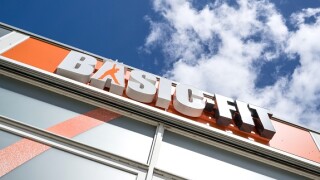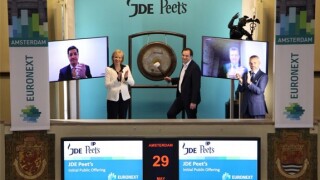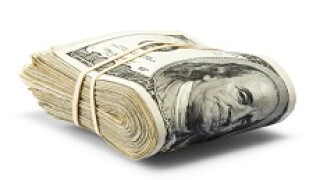The Netherlands
-
Achmea Bank issued the first conditional pass-through (CPT) covered bond since October 2019 on Tuesday with the juicy spread ensuring the most oversubscribed order book ever for this structure, enabling the deal to be priced flat to fair value.
-
Basic-Fit, Europe’s largest operator of fitness clubs, raised €133.3m through a sale of new shares on Monday night. The capital raised gives the company a platform to take advantage of growth opportunities that may arise from the pandemic.
-
Trading levels given are bid-side spreads versus mid-swaps and/or an underlying benchmark and bid-yields from the close of business on Monday, June 1. The source for secondary trading levels is ICE Data Services.
-
The International Finance Corp returned to the Australian dollar bond market to fund its response to the coronavirus pandemic on Monday, while at the end of last week BNG capped the strongest month for SSA Kangaroo deals for over nine months.
-
Shares in JDE Peet’s, the coffee company which priced its IPO on Thursday, traded up by over 13% on their first day on the Amsterdam exchange. The rise vindicated the syndicate's decision to accelerate the roadshow on what is predicted will be Europe’s largest listing all year.
-
-
Bank Nederlandse Gementeen (BNG) this week became the latest public sector borrower to hit the 10 year part of the dollar curve with its first such trade since 2016. While demand seems to be starting to slow down for 10 year dollar bonds, SSA bankers say there is still room for more issuers to follow.
-
JDE Peet’s, the coffee business owned by JAB Holdings, closed the books on its IPO after an accelerated roadshow that lasted only three days. The transaction still attracted huge demand from investors eager to buy into the only sizeable IPO in the market.
-
JDE Peet’s, the European coffee conglomerate listing in Amsterdam, is shutting IPO books after just three days of book building — an extraordinarily quick execution period for what is likely to be Europe’s largest IPO this year.
-
Bank Nederlandse Gemeenten scored a 10 year dollar benchmark bond on Wednesday — its first at the tenor for four years. A fellow European issuer hit the short end of the dollar curve.
-
The New Development Bank is looking to take advantage of the strong demand in dollars by bringing its long-awaited inaugural trade in the currency as part of its response to the coronavirus pandemic.
-
Investors have poured in orders on the first official day of book building for the Amsterdam IPO of coffee company JDE Peet’s. The company built early momentum with several big cornerstone orders and has continued to attract strong demand from investors because of the strength of its business despite the Covid-19 pandemic.










